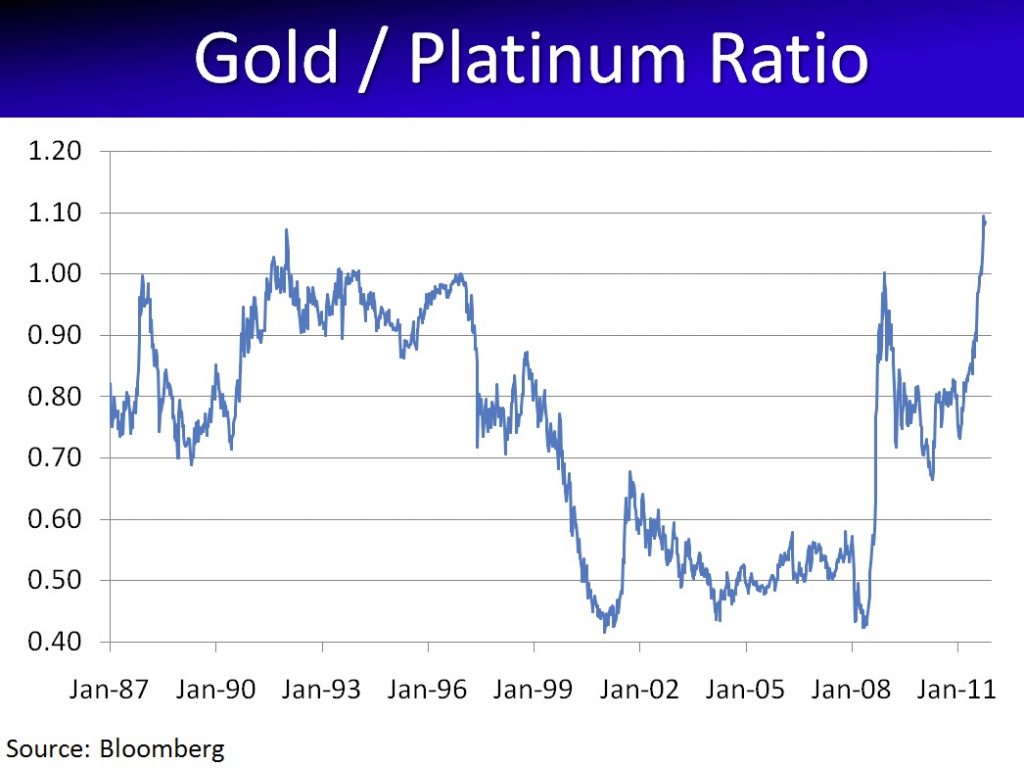 Author: Charles Sizemore
Author: Charles Sizemore
Covestor models: Sizemore Investment Letter and Tactical ETF
Disclosure: No positions in gold or platinum
The silence in the major financial media on gold and precious metals this month has been deafening. As recently as a few weeks ago, you couldn’t get away from gold headlines if you wanted to. For months leading up to gold’s parabolic jump this summer, the financial press was inundated with articles about gold. Most were wildly bullish, but there were also quite a few bearish articles to be found—and a few of those bearish one were written by me.
Gold’s rise certainly gave us all plenty to write about. In a short-lived bout of speculative hysteria, the price of gold soared above $1,900 in late August before quickly falling back down to earth, losing $300 in a matter of weeks.
But throughout the month of October, there has been very little published on gold, bullish or bearish. It’s as if the investing public suddenly lost interest in the yellow metal.
Some of the waning interest is understandable. Gold’s reputation as a “safe haven” certainly lost its shine with last month’s action. Safe havens do not exhibit that kind of volatility. And when it really does appear that the world is ending, it is to the safety and liquidity of U.S. Treasuries that they run, not that most barbarous of relics, gold.
Yet a funny thing has happened. Quietly, under the radar, gold has mounted a comeback, rising over $100 per ounce in just the last week. As a professed gold bear, this makes me pause.
Gold is rising quietly, in the absence of the usual blustery gold bug bravado. This suggests that the weaker buyers were shaken out by last month’s volatility and that the current rise might be a little more durable.
It appears that gold’s role has shifted from that of “crisis hedge” to “risk asset.” After Europe’s announcement that it is finally taking the sovereign debt crisis seriously jolted investors’ animal spirits, all risky assets have received a boost. This includes global equities, industrial commodities, and yes, gold.
I’ve made known my skepticism of gold’s value as a long-term investment in past articles. It pays no interest or dividends, it has little in the way of intrinsic or industrial value, and the only way you profit from gold is by finding someone willing to pay more for it than you did. That’s not an investment; it’s a high-risk speculation.
There is nothing wrong with the occasional high-risk speculation, of course. But as investors, we need to be honest with ourselves about the risk we are taking and we should separate long-term investment capital from short-term trading capital.
With investor risk appetites returning, I see virtually all risky assets doing well for the remainder of 2011. This would—and I say this through gritted teeth—include gold.
Still, I believe investors wanting to profit from a short-term move in the yellow metal shouldn’t get too attached. Gold jewelry and industrial demand has been stagnant for most of the past decade; virtually all of the new demand that has caused the price to quintuple has been due from “investors” ranging from hedge funds and ETFs to individual investors who have given up on the stock market. Gold is still quite trendy, and trendy investments often prove to be disastrous. Just ask investors who bought Netflix (NFLX) at $300 per share.
Gold is also looking overpriced relative to other precious metals – in particular, to platinum. Take a look at the chart below, which tracks the gold/platinum ratio over the past two and a half decades.

Today, gold is more expensive relative to platinum than at any time in the history of the chart. It should be noted that platinum is a far rarer metal than gold. And unlike gold, platinum also has extensive industrial use (particularly in the auto industry) in addition to its use in jewelry.
In 2008, the price of gold surged relative to platinum (note the vertical move in the chart) in large part because of platinum’s industrial value. Gold’s uselessness was actually a virtue because its demand was not tied to auto production, which was weakening at that stage. But as life returned to normal in subsequent months, platinum rallied relative to gold. I would expect to see a repeat of this in the months ahead.
If you are determined to buy a precious metal, platinum might be the better bet at current prices. But whether you’re a skeptical gold bear like myself or a dedicated gold bug, you might try something a little different. Consider a pair trade — buy platinum and short gold.
Whether precious metals rise or fall—and whether the market remains in “risk on” mode or lurches back into “risk off” mode—investors could perhaps profit from the gold/platinum ratio returning to something a little closer to normal.




